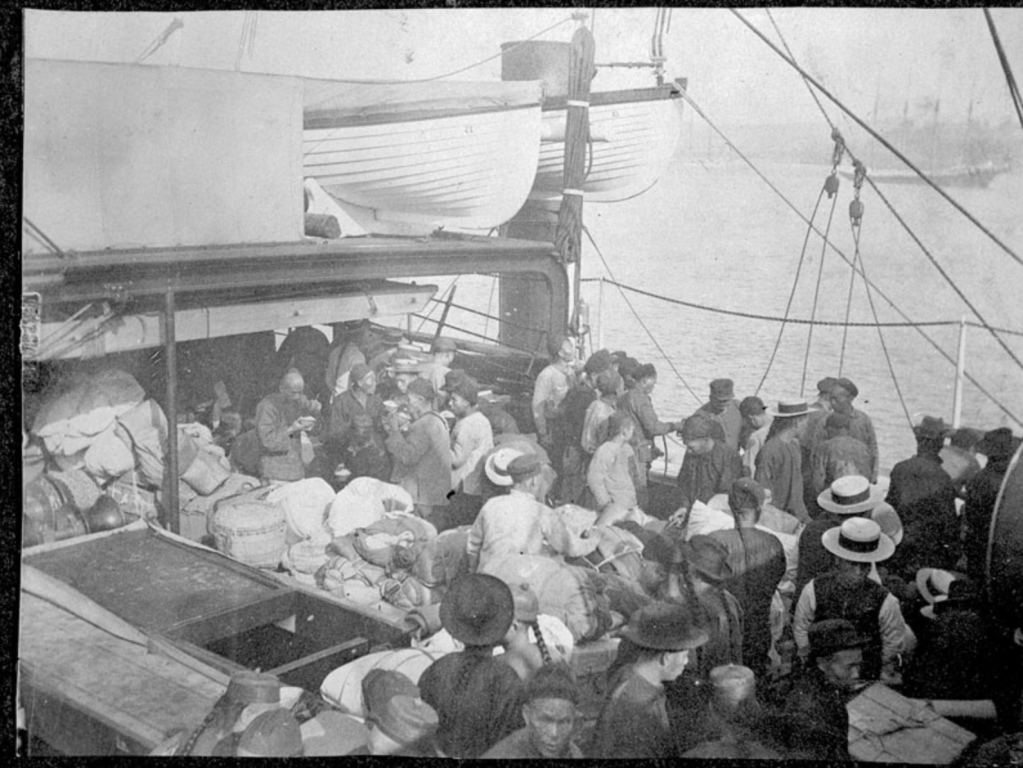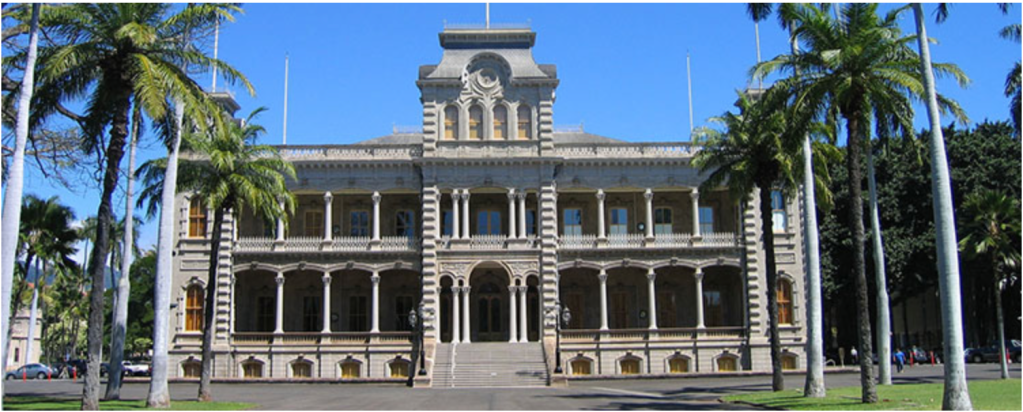Dr. Ronald Williams brought out a letter from US Minister (Minister Plenipotentiary, I.e., Ambassdor) John L. Stevens to Sanford Dole that advised him not to declare a Provisional Government until he has control of the Iolani Palace barracks and the police Station. While watching Act of War, we see Dole declare a Provisional Government, then the narrator says “the Queen had control of the barracks and police station” (!) In other words, the overthrow was botched [see video]
So today, January 17th, we recognize the overthrow. But in terms of international law, it’s actually the 16th of January that’s the important date because that’s the day that the intervention happened – the landing of the marines from the USS Boston.
Although the illegality of the overthrow wasn’t fully understood when Act of War was made in 1993-94, there’s one quote that more than hints at this, and it’s from, of all places, the American magazine (still in existence) Harper’s Weekly:
“if the Constitution were to be strictly followed, annexation could not take place”
Harperʻs Weekly
Another great American quote:
“the government of Hawaii has been stolen and offered to America by the thieves – what is [our] duty? accept the stolen goods?”
Yet another, from President Cleveland:
“the Provisional Government owes its existence to an armed invasion…”
Grover Cleveland, address to Congress, 1893
This means the Provisional Government is self-proclaimed, and by extension, so was the Republic of Hawai’i – and again by extension, its successors the Territorial and State governments – hence the once-popular epithet “fake state.”
The US was engaged in an important, and I think worthwhile, debate over its own role in global affairs, over whether it would be an empire or a “protectionist” power remaining within its own borders. Mark Twain was a prominent member of the Anti-imperialist League, opposing annexation. Prominent among supporters of the expansionist doctrine was Theodore Roosevelt, whose name you’ll recognize from a local high school in Makiki.
People put little faith in international law, which constitutes the “rules” of the international system, and some on the extreme end hold that international law doesn’t exist. But those people still need passports to travel, benefit from trade agreements – which are treaties – and the treaty that forbids shooting down passenger planes – that is, international law.









